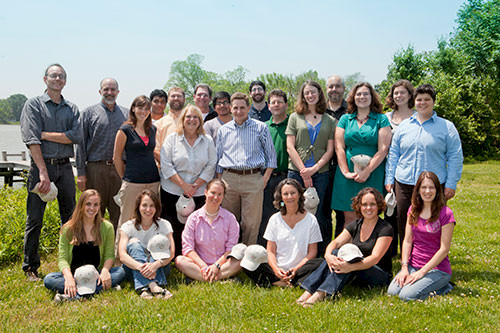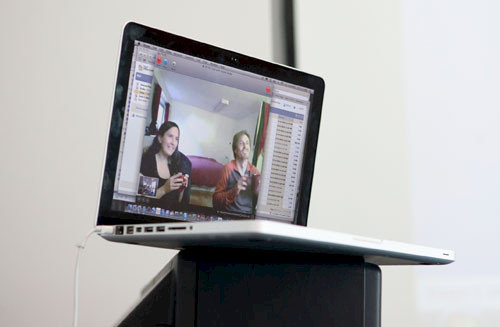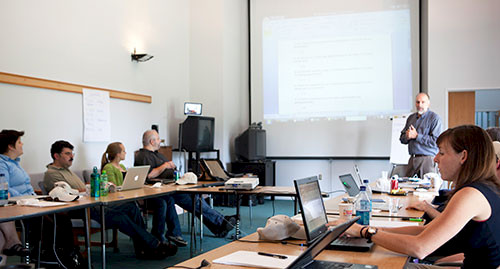The Integration and Application Network 'tribe'
Bill Dennison ·We recently held our annual Integration and Application Network retreat, titled "Creating synergies and leveraging impacts". It was conducted at the Harry R. Hughes Center for Agro-Ecology, on the Wye River, a tributary of Chesapeake Bay. Attending this retreat were the Science Integrators and Science Communicators from a) the 'bathhouse' on the Horn Point Laboratory campus, b) the EcoCheck team based at the Cooperative Oxford Laboratory and c) the Annapolis Synthesis Center. As well, the IAN data analysts, modelers and web developers based at the Chesapeake Bay Program attended. The IAN administrative staff (Ken Barton and Dottie Samonisky) both contributed to the discussion as well as organized the retreat logistics. Adrian Jones, IAN webmaster, and Tracey Saxby, science communicator, attended the afternoon session via Skype from their Canadian hideaway. We had a few guests as well, Dave Nemazie and Chris Conner from UMCES attended and Cheryl Nemazie came along to take photos for university IDs and the IAN website.


The retreat was divided into four sections:
- With significant numbers of new staff, it is important that we properly introduce ourselves, both personally and professionally to one another
- In order to maximize our combined impact, we need to look for synergies and efficiencies
- To leverage more opportunities, marketing and promotion of IAN products and capabilities needs to be investigated
- The IAN web site is our public face and reviewing the new features and older components will help prioritize updates
The introductions were accomplished using a maximum limit of 3 powerpoint slides each and we learned new things about each other. The synergies and efficiencies section was preceded with an online survey that IAN staff completed prior to the retreat. The survey results indicated that IAN staff felt that they work with good colleagues, at a job that is challenging but rewarding. The marketing and promotion of IAN products discussed the creation of online teaching modules and enhancing the dissemination of our products, particularly through IAN Press.
The discussion about the IAN website focused on providing a friendlier user interface, particularly regarding people who may want to partner with IAN. We discussed the reasons for the increased web traffic that we have observed on the IAN web site and suspect has this increased traffic has been fueled in part by the increased blogging, image library and symbol library growth, new seminar series format and IAN Press activity. The group agreed to begin blogging regularly, particularly associated with the various trips that IAN staff take to teach courses, facilitate workshops or undertake projects.


A topic that surfaced was that the IAN group was acting as a 'tribe', as per the book "Tribes" by Seth Godin. In this book, Godin defines a tribe as a group of people connected to one another, connected to a leader, and connected to an idea. Godin says that to be a tribe, it is necessary to have a shared interest and a way to communicate. Translating the examples used in this book to the IAN experience is an interesting exercise. The IAN tribe has a shared idea that by effectively using science communication and integration, we can help solve environmental problems. The communication that IAN does internally (weekly newsletters, group email, instant messenger, group projects, etc.) and externally (enewsletters, seminars, science communication products, media exposure) is a key to our tribe. We have people who really like their jobs, enjoy the challenges of developing new projects and new partners, embrace travel to interesting locations to work with interesting people and actually enjoy working with one another. The IAN tribe is in the business of enhancing opportunities of our partners to create change and we have intense collaborative experiences in various parts of the world, but our focus is on Chesapeake Bay. Ultimately, we need to create positive change in our own 'backyard', as well as in other locations.
About the author
Bill Dennison

Dr. Bill Dennison is a Professor of Marine Science and Interim President at the University of Maryland Center for Environmental Science (UMCES).